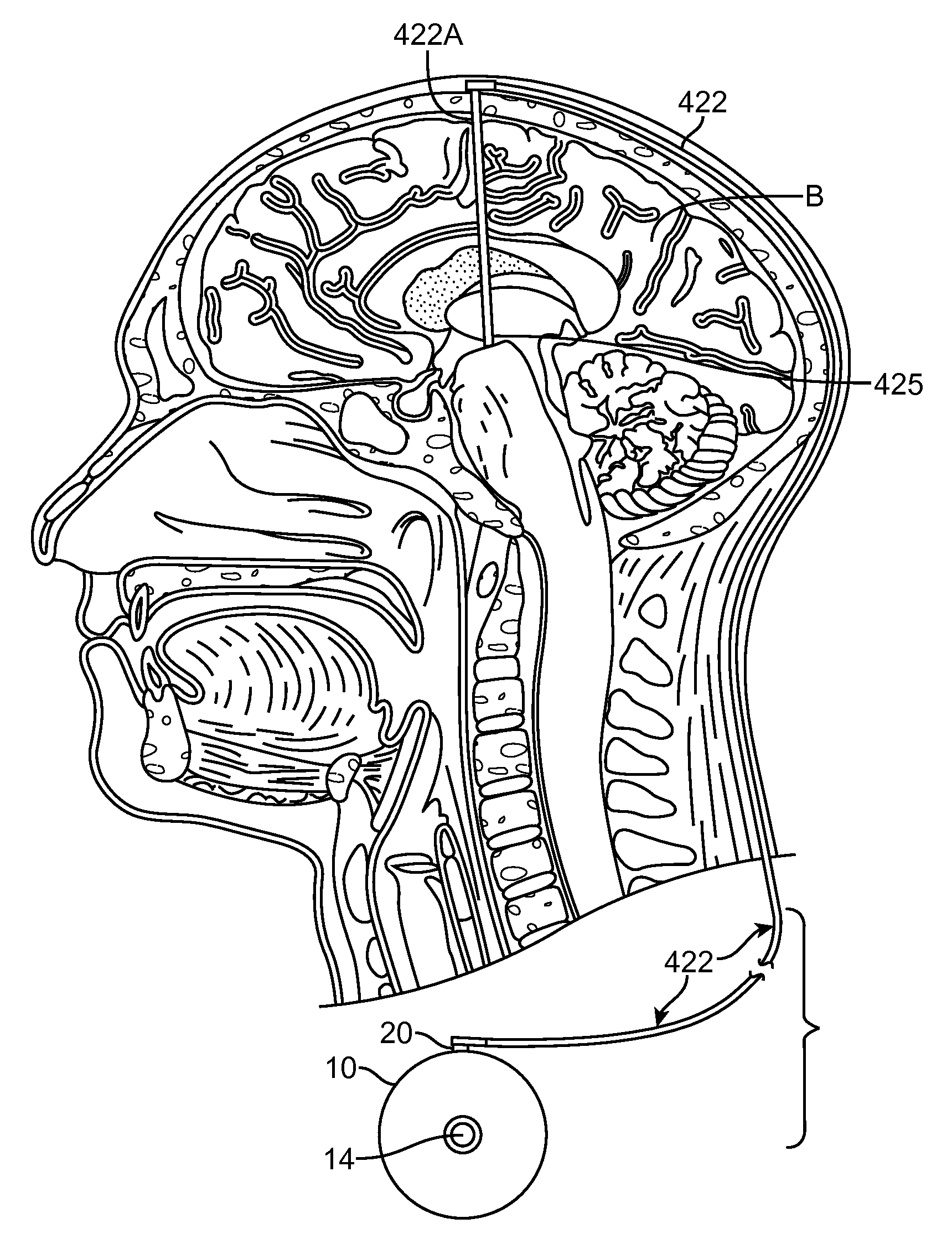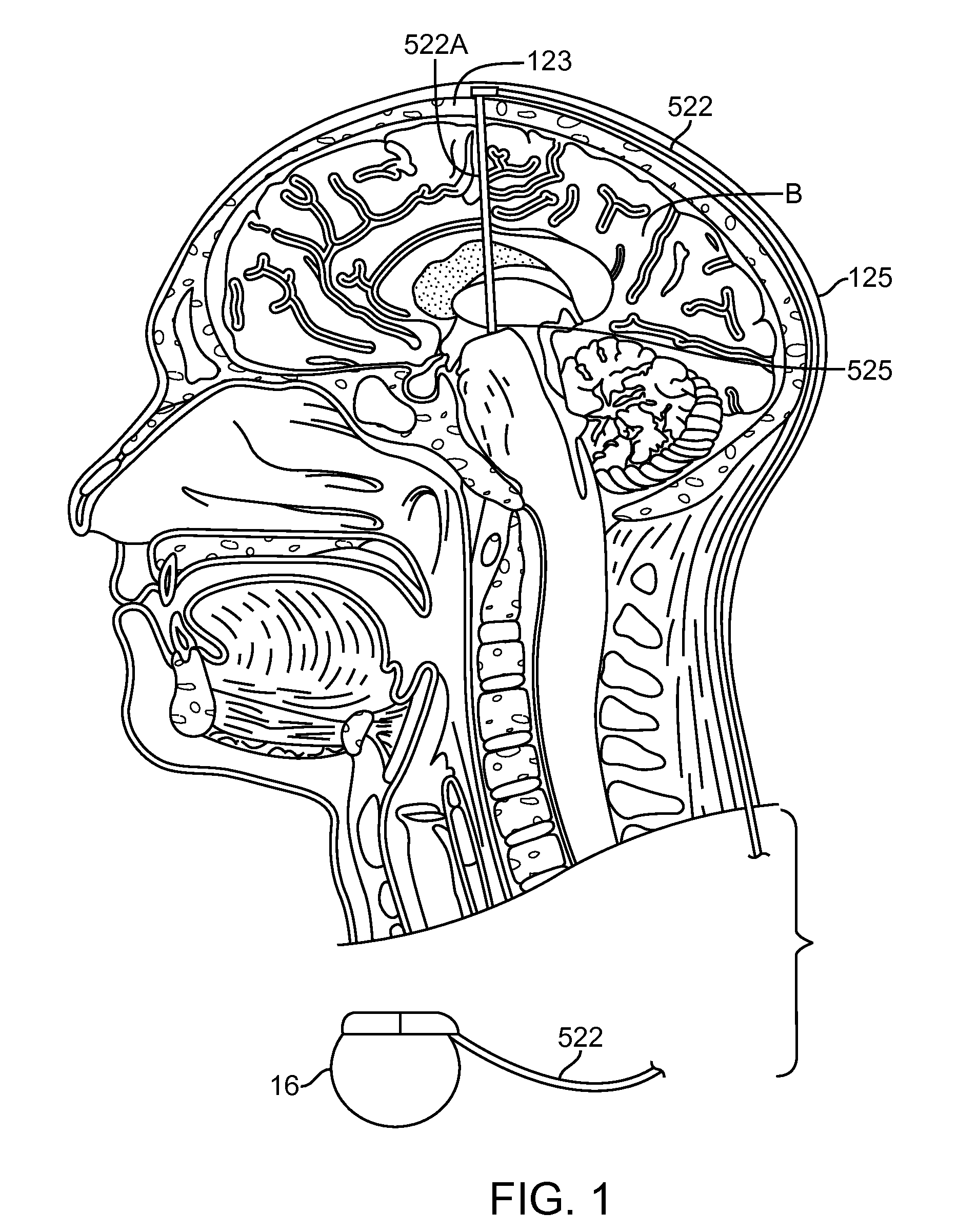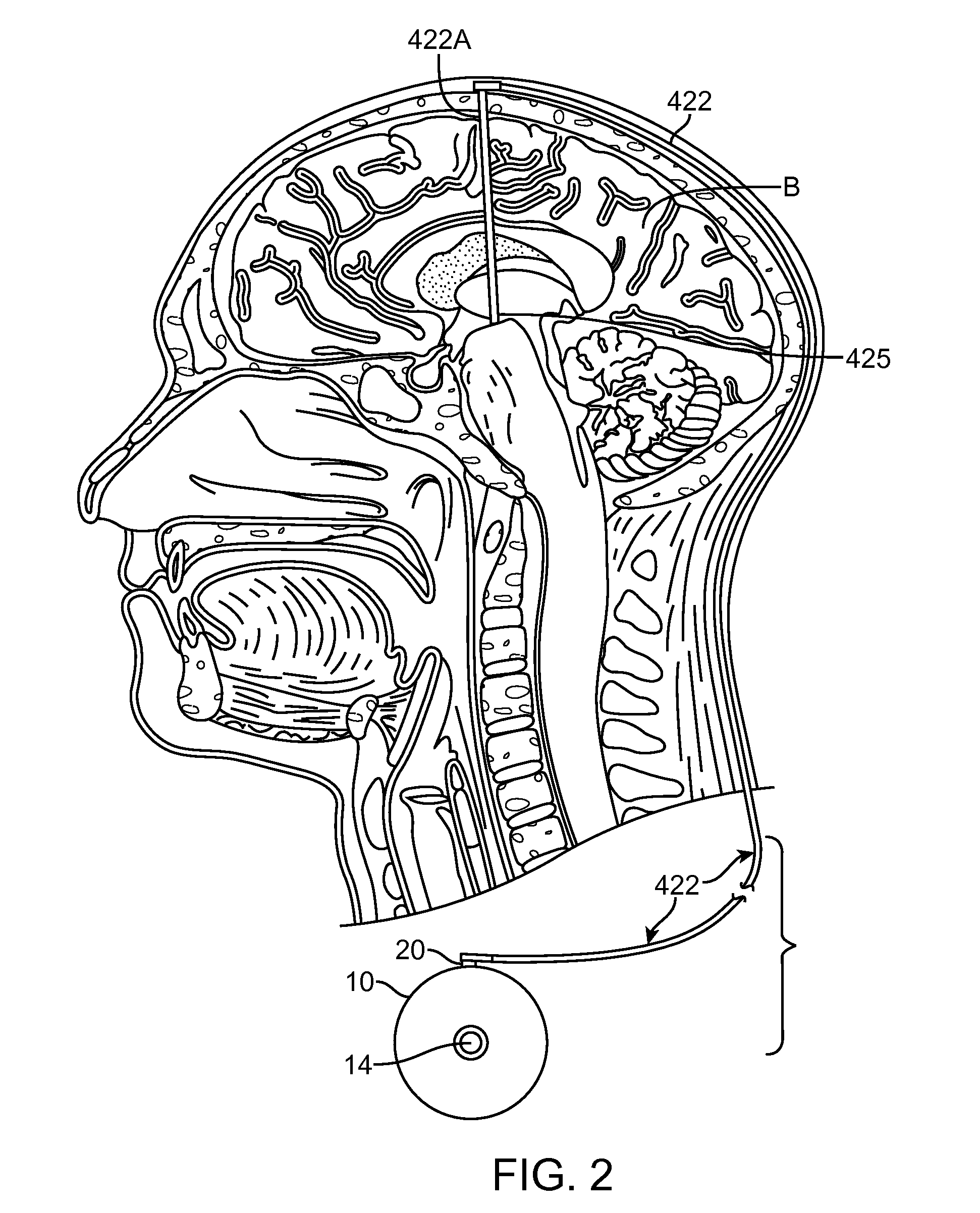Cognitive function within a human brain
a human brain and cognitive technology, applied in the field of cognitive function within the human brain, can solve the problems of significant decline in quality of life, inability to perform normal daily activities, measurement of change in cognitive and functional status, for example, remains challenging, etc., to achieve the effect of improving cognitive function and significantly improving cognitive function
- Summary
- Abstract
- Description
- Claims
- Application Information
AI Technical Summary
Benefits of technology
Problems solved by technology
Method used
Image
Examples
Embodiment Construction
[0019]The invention discloses techniques for delivering treatment therapy to Papez circuit of a human brain to improve cognitive function. The applicant has discovered that cognitive function can be improved through delivery of treatment therapy to the Papez circuit and / or tissue upstream to or downstream from the Papez circuit. Accordingly, the invention incorporates electrical stimulation and / or drug infusion techniques to directly or indirectly influence tissue elements within the Papez circuit. One or more electrodes and / or catheters are implanted in the brain so that the stimulation or infusion portions lie within or in communication with predetermined portions of the brain. The electrical stimulation or drug therapy influences the Papez circuit to achieve the desired result.
[0020]These techniques of the present invention are suitable for use within any implantable medical device. In an embodiment, the present invention is implemented within an implantable neurostimulator syste...
PUM
 Login to View More
Login to View More Abstract
Description
Claims
Application Information
 Login to View More
Login to View More - R&D
- Intellectual Property
- Life Sciences
- Materials
- Tech Scout
- Unparalleled Data Quality
- Higher Quality Content
- 60% Fewer Hallucinations
Browse by: Latest US Patents, China's latest patents, Technical Efficacy Thesaurus, Application Domain, Technology Topic, Popular Technical Reports.
© 2025 PatSnap. All rights reserved.Legal|Privacy policy|Modern Slavery Act Transparency Statement|Sitemap|About US| Contact US: help@patsnap.com



